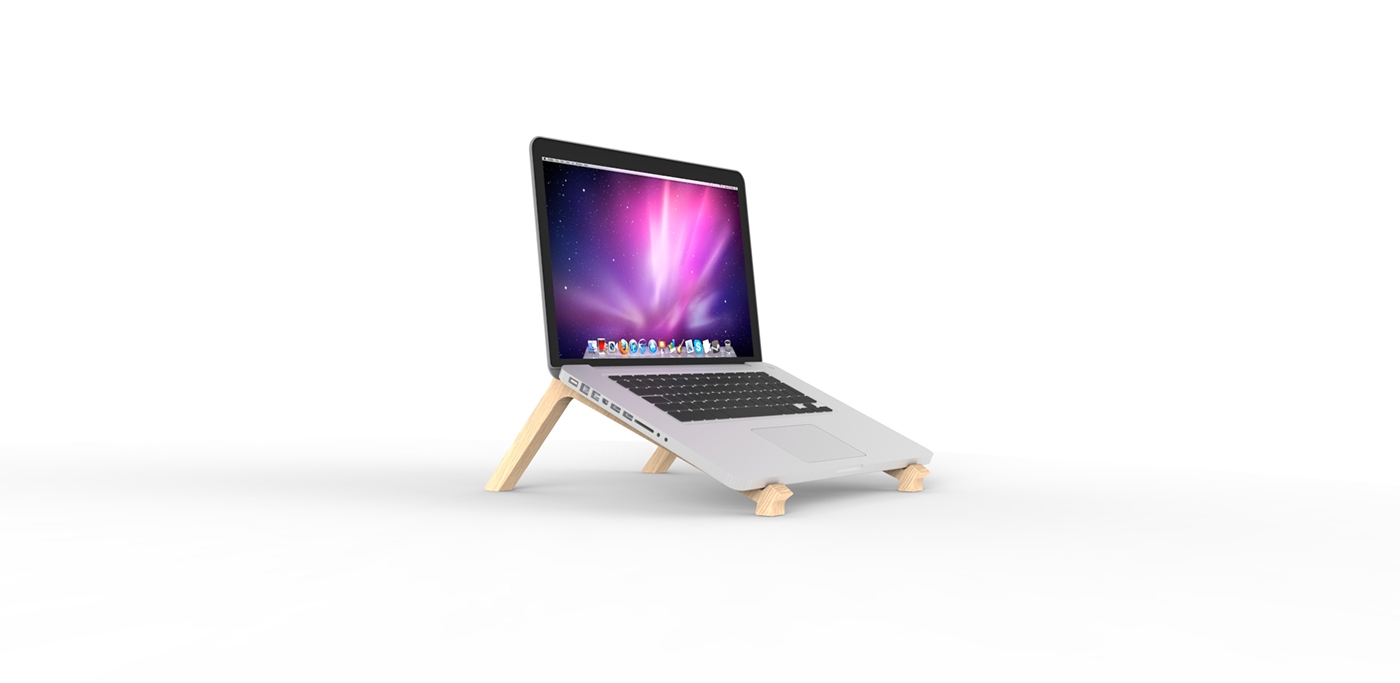Keil Laptop Stand
Wrist + Neck Comfort
Can be used productively and comfortably with the application of ergonomic principles based on an understanding of how our bodies adjust to the computer and immediate environment.
Portable
Use it wherever you go. Fits easily in your laptop bag.
Lightweight
It weighs only 150 grams.
Heat Ventilation
Cools down your laptop and protect it from overheating.
Dual mode
Typing mode – 12 degree inclination while typing to relieve tension in wrists. Also releases strain on neck by elevating the screen by 90 mm.
Viewing mode - 160 mm elevation, when the stand is used upside down, brings the laptop screen within 15 degrees viewing angle which prevents neck cramps.
Compatible
It's designed for 11", 13", 15", and 17" laptops (inches).
Typing mode

Viewing mode


Ergonomic evaluation
Relative assessment of posture and typing speed between use of laptop with and without laptop stand.
Relative assessment of posture and typing speed between use of laptop with and without laptop stand.
Postural assessment
Neck flexion - angle between the vertical axis of the trunk and the line from the midpoint between the acromions and the midpoint between the tragi
Head tilt - angle between the global horizontal axis and the line from the right tragus to the right canthus
Viewing angle - angle between the global horizontal axis and the line from the midpoint of the subjects right and left canthus to the top, center of the display
Wrist Flexion – angle made with forearm
Subjective assessments
Typing speed

Procedure
A video camera was placed orthogonal to the user’s workstation to record body movements.
Body angles measurement using Kinovea.
Typing speed was calculated by measuring the time required to type equal number of characters.

Results
Consistent with hypothesis that says, the use of the simple inclines provides postural benefits for the head, neck and wrist postures. Laptop’s inclined configuration led to smaller non-neutral wrist, head and neck postures compared to the configuration. The inclined configuration also decreased viewing angle by 15 degrees. Typing speed increased by 12%.
Conclusion
This study found several small but statistically significant differences in postures across each of the configurations evaluated. It is difficult to assess the practical implication of these small differences as the literature is limited regarding the relationship between postures and risk of musculoskeletal disorders.
Evaluating other physical outcomes, such as joint torques and muscle activity, would provide further insight into the biomechanical loads associated with each configuration. Another limitation was the short duration of this study experiment (approximately 10 mins per trial). During longer sessions users may adjust their posture which could be constrained by the configuration they are working in.
Product in use






